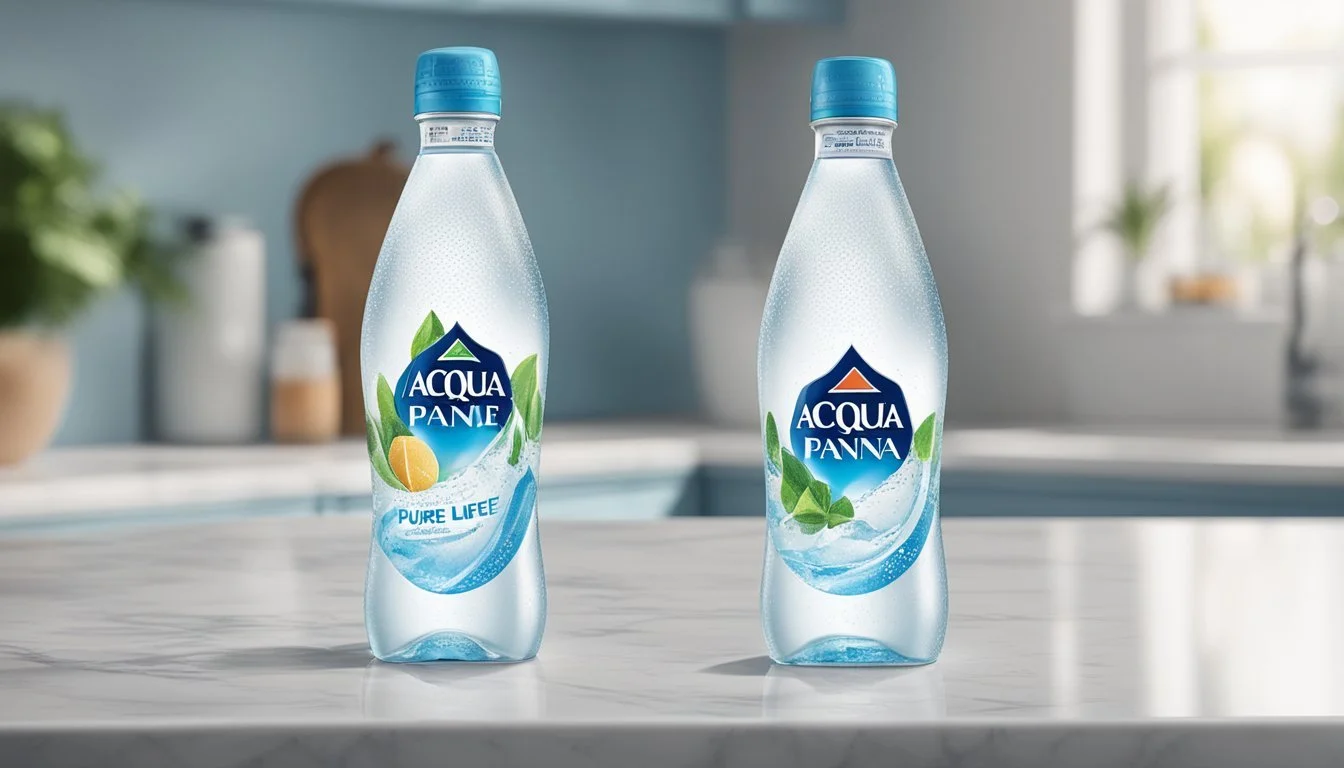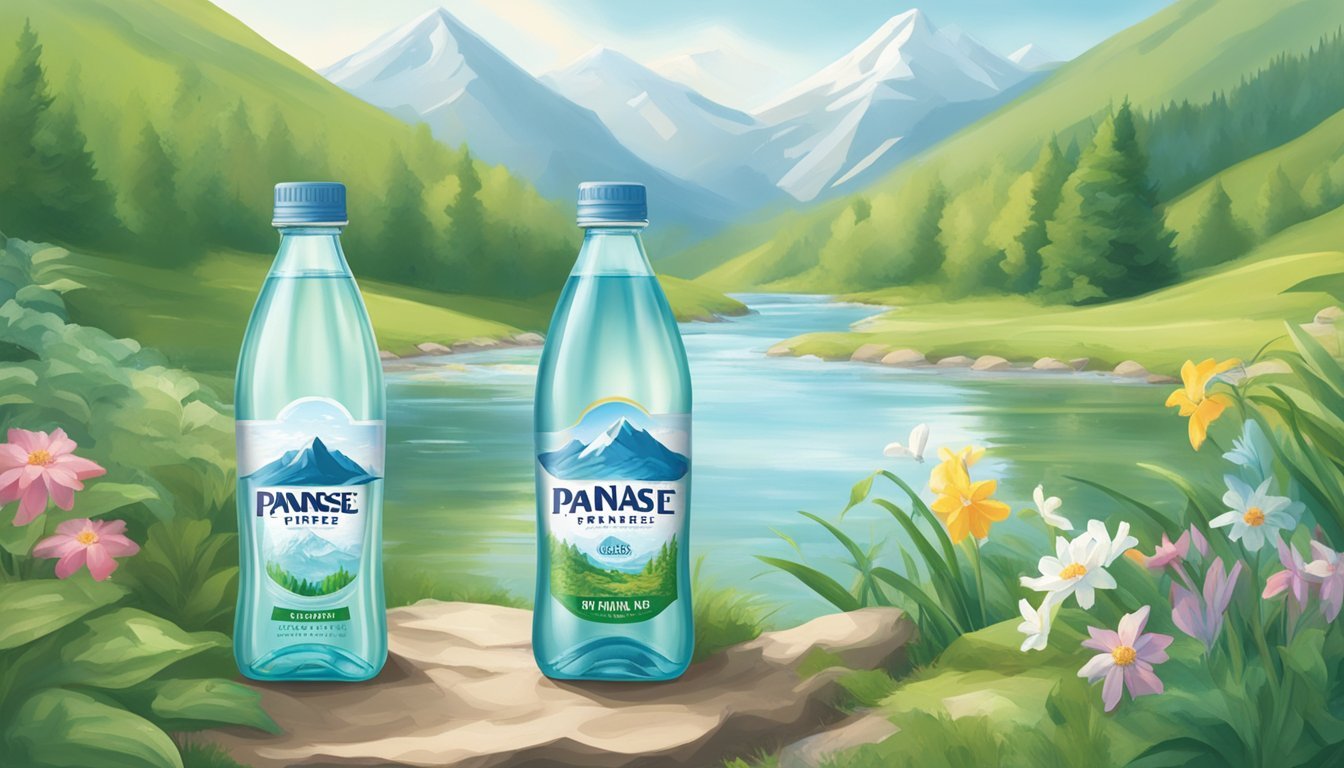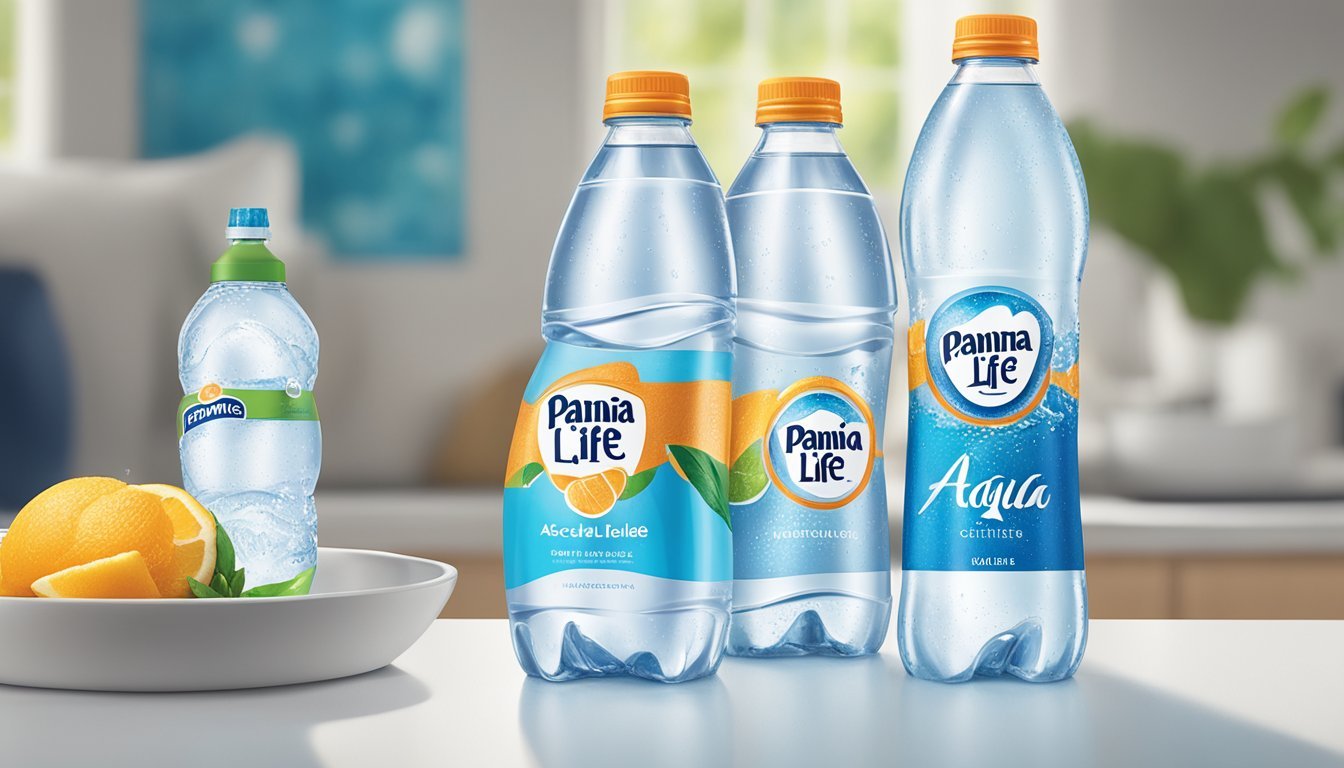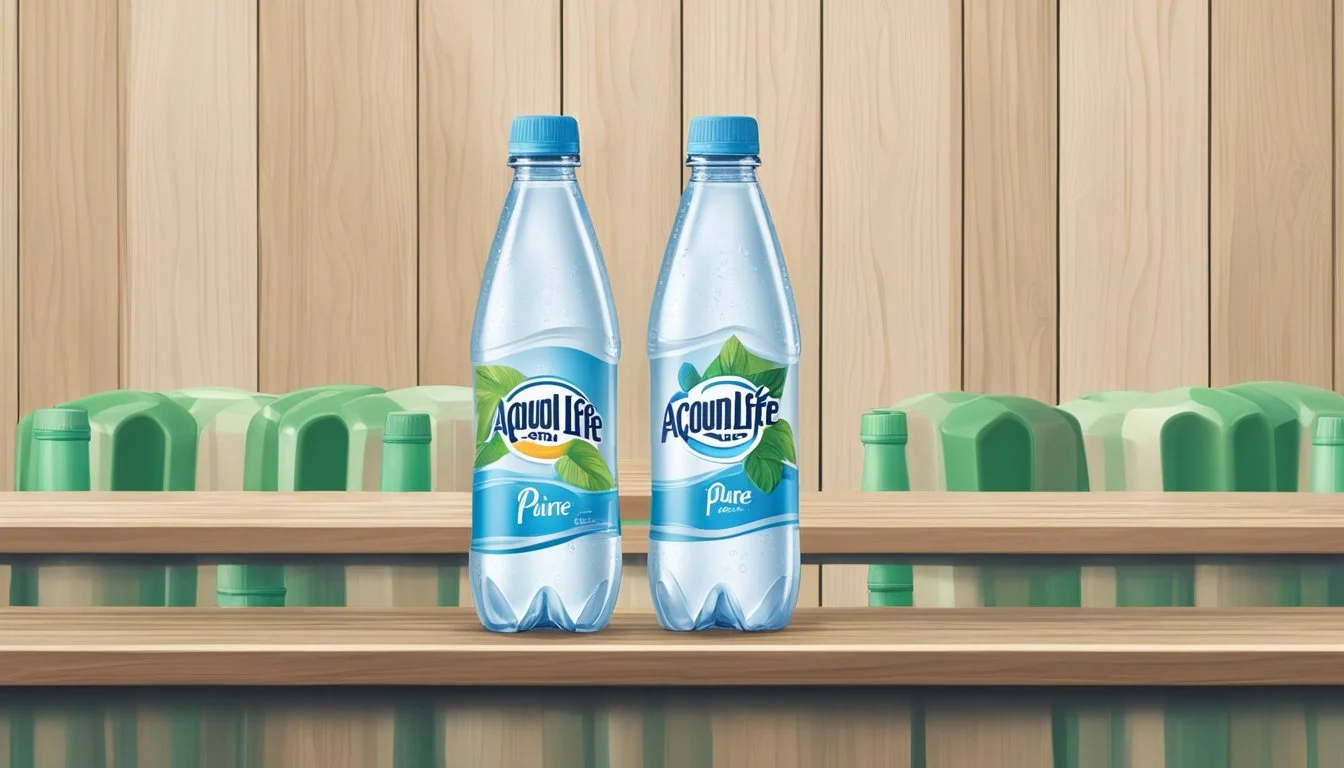Acqua Panna vs. Nestlé Pure Life
A Comprehensive Comparison of Bottled Water Brands
When it comes to choosing bottled water, consumers are often confronted with a plethora of brands, each boasting diverse sources and unique mineral profiles. Among these, Acqua Panna and Nestlé Pure Life stand out as widely recognized options. Acqua Panna, sourced from the hills of Tuscany, Italy, offers a smooth taste and a natural pH balance of around 8.5, indicative of its alkaline nature. In contrast, Nestlé Pure Life, a more affordable and globally available brand, promises a consistent taste derived from a rigorous filtration process, despite its more varied sources.
Selecting between these two bottled waters is not just a matter of taste preference but also a consideration of their respective qualities. Acqua Panna's pristine source and artisan bottling process lend to its reputation as a premium water. This positions it in stark contrast to Nestlé Pure Life, which, while being one of the highest-selling bottled waters worldwide, finds its reputation impacted by the presence of sodium and potential additives, a common practice done to enhance taste in some mass-produced water brands.
For the conscientious consumer, the debate over which bottled water is superior goes beyond branding; it is rooted in the methods of purification, environmental impact, and the overall transparency of the bottling process. Whether the choice is the natural spring waters of Acqua Panna or the widely distributed Nestlé Pure Life, the decision points to a broader narrative about personal health, environmental stewardship, and the cultural significance of water.
Understanding Bottled Water
In exploring the vast landscape of bottled water, one discerns a range of types available, each adhering to specific industry standards to guarantee safe, hydrating beverages for consumers worldwide.
Types of Bottled Water
Bottled water comes primarily in two categories: still and sparkling. Still water, which lacks carbonation, can come from various sources, including natural springs or municipal water supplies. Sparkling water is infused with carbon dioxide gas to create effervescence. Among these, mineral water and alkaline water contain higher levels of minerals and electrolytes, and alkaline water boasts a higher pH, often achieved through a process that enhances its alkalinity.
The Bottled Water Industry
The industry has grown around consumers’ need for clean drinking water that's portable and convenient. It relies on the extraction of water from natural springs or aquifers before bottling. Groundwater and municipal sources also serve as feeds, undergoing various filtering and purification processes to maintain quality and safety.
Health and Hydration Benefits
Bottled water offers hydration benefits critical for bodily functions. Varieties with added electrolytes or naturally occurring minerals can provide enhanced hydration options or supplementary nutritional benefits. It's essential to distinguish between pure water and those with additives that might alter its hydration efficacy or potential health impacts.
Regulations and Standards
Bottled water producers must adhere to strict regulatory standards which ensure the safety and quality of their products. These regulations dictate the purification process, labeling, and the acceptable levels of contaminants. The FDA regulates bottled water in the United States, with standards often comparable to the EPA's regulations for tap water.
By offering a spectrum of bottled water—from simple, purified options to mineral-rich and alkaline varieties—the industry caters to an array of preferences and needs, each monitored to uphold standards of safety and quality.
Acqua Panna: Origin and Distinction
Acqua Panna is distinguished by its unique combination of purity and taste, originating from a well-known spring in Tuscany and boasting a meticulous bottling process.
Tuscany's Natural Spring
The origins of Acqua Panna water are deeply rooted in the serene, rolling hills of Tuscany. Specifically, it is sourced from a natural spring located at the foothills of the Italian Alps. The water travels through limestone formations, which contribute to its renowned softness and balanced mineral composition.
Mineral Content and Flavor
Characterized by a distinct mineral flavor, Acqua Panna's water is naturally enriched with a variety of minerals as it percolates through the rich, geological strata of Tuscany. Its mineral content includes elements like calcium and magnesium, and its pH level is slightly alkaline, attributed to the region's unique underground aquifers.
The Bottling Process
Each bottle of Acqua Panna reflects the brand's dedication to preserving the water's natural quality. The bottling process takes place close to the source, ensuring that the water maintains its purity and taste from spring to bottle. The method employs state-of-the-art technology to retain the natural characteristics of this esteemed natural water.
Nestlé Pure Life: A Global Brand
Nestlé Pure Life, produced by the world's largest bottled water company, offers widespread availability and consistent quality control, establishing it as a global leader in the bottled water market.
Sourcing and Purification
Nestlé Pure Life sources its water from various municipal water supplies. The water undergoes a multi-step purification process that includes reverse osmosis and additional filtration methods branded as Hydro-7. This rigorous purification strategy ensures the removal of particulates and other contaminants to meet the company's stringent quality standards.
Health and Quality Focus
Nestlé Pure Life places a strong emphasis on health and quality. The quality control measures align with international standards, and the incorporation of essential minerals post-filtration helps maintain the water's taste and nutritional benefits. Each bottle of Nestlé Pure Life reflects a commitment to providing safe, high-quality drinking water.
Market Presence and Accessibility
With its extensive distribution network, Nestlé Pure Life is one of the most accessible bottled water brands globally. It caters to a vast audience, from small towns to major cities, making Nestlé's Pure Life water a ubiquitous choice for consumers. The brand’s market presence is marked by the familiar logo and the universal reach of Nestlé products.
Comparative Analysis
In comparing Acqua Panna and Nestlé Pure Life, the analysis focuses on taste and mouthfeel, mineral composition, price and value, and environmental impact. These factors are crucial in determining which bottled water provides a better drinking experience and value for consumers.
Taste and Mouthfeel
Acqua Panna, known for its smoothness, offers a unique taste that's often described as crisp with a very palatable mouthfeel, which can be attributed to its natural origin from the springs of Tuscany. Its mineral content contributes to a well-rounded flavor without a metallic hint. In contrast, Nestlé Pure Life has a more neutral flavor profile and is purified, lacking the distinctive taste that comes from minerals in natural spring water. Consumers often describe the taste as clean, but it may lack the complexity that Acqua Panna boasts.
Mineral Composition
Acqua Panna:
Minerals: Contains a balance of minerals like calcium and magnesium
Electrolytes: Naturally occurring electrolytes
pH Balance: Slightly alkaline with a pH level of 8.5
Nestlé Pure Life:
Minerals: Added minerals for taste
Electrolytes: Enhanced with electrolytes during the purification process
pH Balance: Aimed to be neutral, which can vary
Acqua Panna’s mineral water content provides a natural richness in flavor and added health benefits. Nestlé Pure Life, which adds minerals for taste, lacks the natural mineral composition from the source.
Price and Value
Acqua Panna is generally priced higher than Nestlé Pure Life, reflecting its positioning as a premium mineral water. Nestlé Pure Life is marketed as an affordable, everyday option. While Acqua Panna may provide a more sophisticated experience for those who value taste and origin, Nestlé Pure Life offers accessible hydration for those who prioritize cost-effectiveness.
Environmental Impact
The environmental impact of bottled water is significant regardless of the brand. Acqua Panna and Nestlé Pure Life both have footprints in terms of plastic usage and transportation. However, Nestlé has faced criticism regarding the sustainability of its water sourcing and environmental practices. Acqua Panna emphasizes its use of recyclable materials but the transportation of water from Italy to global markets also entails a substantial carbon footprint. Consumers concerned about environmental issues may opt for local brands or alternatives to bottled water.
Consumer Preferences and Trends
As bottled water becomes a staple in consumers' daily lives, understanding the intricate preferences and trends that drive their choices is crucial. It's not just about quenching thirst; factors like the origin of the water, the purification process, and packaging play a significant role in shaping consumer decisions.
Brands and Options
Consumers today are faced with an extensive range of water brands on the shelves, from Acqua Panna and Nestlé Pure Life to premium choices like Fiji and Voss. Accessibility and affordability often influence consumer preferences, with Nestlé Pure Life being known for its wide availability and cost-effectiveness. On the other end, brands like Evian and Icelandic Glacial, harvested from natural springs in the French Alps and Iceland respectively, appeal to those seeking a more "exotic" touch to their hydration.
Purified vs. Spring Water
The source and treatment of water are pivotal in consumer choice. Purified water, such as Aquafina (produced by PepsiCo) and Dasani (produced by Coca-Cola), undergoes a significant filtration process to remove impurities and is often accused of lacking distinct taste. Spring waters, such as Mountain Valley Spring Water and Arrowhead Mountain Spring Water, boast a natural filtration process through mineral-rich rocks that add to their taste profile. Essentia and Smartwater market themselves as ionized or vapor-distilled, offering unique selling points.
Importance of Packaging
Packaging is not just a matter of convenience but also a statement of environmental impact and a reflection of brand identity. Innovative designs like Boxed Water and eco-friendly initiatives by brands like Starbucks’ Ethos Water resonate with environmentally conscious consumers. The move towards materials that reduce the CO2 footprint, such as Life WTR's use of recycled plastics, has garnered positive reception. Meanwhile, the sleek design of Voss or San Pellegrino's glass bottles allows them to stand out as fashion accessories as much as hydration options.
Health Implications and Myths
When comparing Acqua Panna and Nestlé Pure Life bottled waters, it's important to understand their impact on hydration, the presence of minerals, and the pH levels, as well as to clarify common misconceptions surrounding bottled water.
Hydration and Mineral Benefits
Acqua Panna is recognized for its naturally occurring minerals, being classified as natural spring water. This type of water originates from a protected underground source and travels through layers of rock, which enrich it with a unique mineral profile. The presence of minerals such as calcium and magnesium can be beneficial for health, contributing not only to hydration but also to daily dietary mineral intake.
On the other hand, Nestlé Pure Life undergoes a multi-step process of filtration that includes reverse osmosis. This purification process removes most dissolved substances, including beneficial electrolytes, unless they are re-added afterward. Although it ensures safe hydration, the resultant product lacks the mineral flavor characteristic of natural spring waters like Acqua Panna.
The Alkaline Water Debate
The pH level of water indicates its acidity or alkalinity, with 7 being neutral. There's ongoing discussion on the health benefits of alkaline water, generally defined as water with a pH above 7. Acqua Panna boasts a slightly alkaline pH level, typically around 8, which some believe can help in neutralizing the body's acidity.
Nestlé Pure Life, despite its thorough purification process, often has its pH adjusted to be slightly alkaline as well. While some proponents argue that alkaline water helps with digestion and metabolism, scientific evidence supporting these claims is limited. Both brands offer alkaline versions, purported to provide enhanced hydration, but such benefits are not conclusively proven.
Debunking Common Misconceptions
One common myth is that purified water, like Nestlé Pure Life, is inherently superior to natural spring water in terms of quality and safety. However, this is not necessarily the case as both types undergo rigorous testing standards for safety and quality. It is also sometimes believed that electrolyte water is essential for day-to-day hydration, when in fact, for most individuals, regular water meets hydration needs unless there is excessive sweating, such as during intense exercise.
Additionally, some consumers assume that the taste of water with a distinct mineral flavor suggests contamination, but this is a feature of natural spring waters like Acqua Panna, where the flavor is a result of beneficial minerals from the source. It's important to rely on verified information rather than myths when choosing a bottled water for consumption.
The Future of Bottled Water
The bottled water industry is poised to evolve with a focus on innovative production and packaging methods aimed at sustainability, as well as the rise of new brands that align with emerging consumer trends.
Innovation and Sustainability
In the quest for sustainability, major players like Nestlé and up-and-coming brands are increasingly leveraging advanced filtration techniques and eco-friendly packaging. Nestlé Pure Life, for example, has taken steps to reduce its carbon footprint, acknowledging the environmental concerns associated with plastic bottles. Meanwhile, emerging companies are exploring the use of renewable resources, such as plant-based plastics, to further reduce environmental impact.
Bottled water brands are also introducing products enhanced with naturally occurring minerals like calcium, magnesium, potassium, and sodium. Some brands, like Fiji Water, tout the natural filtration process through volcanic rock, which enriches the water with minerals and provides a unique taste profile that is often highlighted by water sommeliers.
Mineral Common Source Benefit in Water Calcium Limestone Bone health and taste Magnesium Underground springs Muscle function Potassium Texas aquifers Nerve function Sodium Italian Alps Hydration and taste
Emerging Brands and Trends
Consumers are not only interested in the health benefits of bottled water like higher calcium content but also in the origin story and purity of the water they consume. Brands such as Eternal Water and Crystal Geyser Natural Alpine Spring Water emphasize their natural sourcing from protected springs and aquifers. These brands often compete with filtered tap water by highlighting the unique mineral profiles and taste that come from their respective sources, whether it's the Italian Alps or untouched springs.
There is also a growing trend for functional bottled waters, offering enhanced hydration comparable to sports drinks like Gatorade without the added sugars. Sparkling waters are on the rise too, with consumers seeking the sensory experience of effervescence coupled with the health benefits of mineral water. Some brands even capitalize on the history of their sources, such as those affected by long-ago volcanic eruptions, to market their product's distinctiveness.
With the industry's trajectory, the ingredient list of bottled water is becoming more diverse and tailored to consumer health trends, while the focus on sustainability reflects a commitment to future generations.







